Syngonium Schott
arrowhead vine, African evergreen, American evergreen, emerald jewel, five fingers, goosefoot, nephthytis
Araceae
Mexico, Central America and parts of South America
(one species plus cultivated hybrids and varieties)
Syngonium podophyllum Schott
tropical and subtropical regions in the United States, South Africa, Australia, Singapore, Malaysia, China, the West Indies, and on several Pacific Islands
Syngonium podophyllum is an established invasive in several countries. It has been known to invade habitats of endangered ferns.
climbing hemi-epiphyte to epiphyte, creeping when juvenile
Small to medium creeping aroid. Stems round, ± glaucousglaucous:
(adj) covered with a waxy whitish or bluish coating
; producing milky latexlatex:
(n) a usually milky-looking liquid found in the cells of many plants
. Leaves alternatealternate:
(adj) (of leaves) bearing one leaf per node; placed singly on the stem at different heights
 , numerous, dimorphic; petiolepetiole:
, numerous, dimorphic; petiolepetiole:
(n) the stalk of a leaf
 sheath long, when mature rounded to obtusely angularangular:
sheath long, when mature rounded to obtusely angularangular:
(adj) having projecting longitudinal angles; undulate, but sharply angled rather than gently rounded
above the sheath. Juvenile leaves simple, ovateovate:
(adj) egg-shaped in outline; generally with the broad end at or near the base
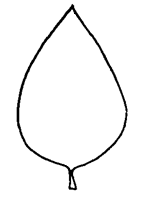 , becoming sagittatesagittate:
, becoming sagittatesagittate:
(adj) shaped like an arrowhead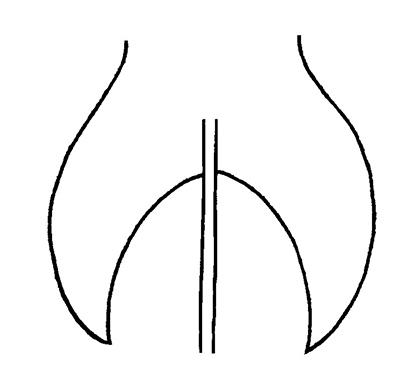 or hastatehastate:
or hastatehastate:
(adj) (of a leaf) with a narrow, pointed lamina with two basal lobes spreading more or less at right angles to the petiole
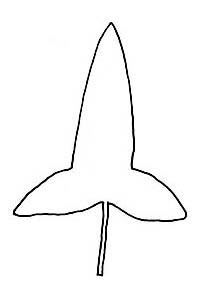 . Mature leaves deeply palmatepalmate:
. Mature leaves deeply palmatepalmate:
(adj) (of leaves or venation) with lobes, leaflets, divisions or veins originating from the same point
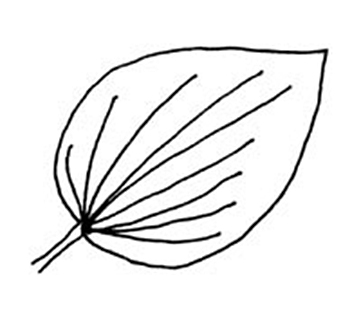 with 3-11 leaflets; middle leaflets obovateobovate:
with 3-11 leaflets; middle leaflets obovateobovate:
(adj) ovate, with the narrow end at the base
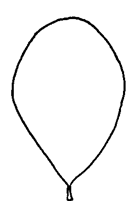 to broadly ellipticelliptical:
to broadly ellipticelliptical:
(adj) in the form of an ellipse (oval)
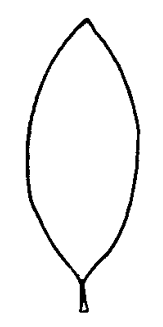 , apexapex:
, apexapex:
(n) the point farthest from the point of attachment; the tip (often pointed)
abruptly acuminateacuminate:
(adj) tapering gradually to a point and forming more or less concave sides
 , base ± decurrentdecurrent:
, base ± decurrentdecurrent:
(adj) extending downward, beyond the point of insertion
; laterallateral:
(adj) on or pertaining to the side of an organ or structure
leaflets smaller, base variously auriculateauriculate:
(adj) bearing auricles
, auriclesauricle:
(n) an ear-shaped lobe or appendage at the base of some leaves and flower petals
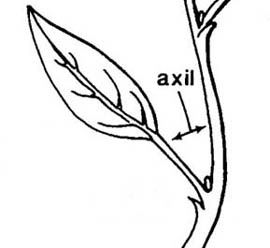 oblong to broadly ellipticelliptical:
oblong to broadly ellipticelliptical:
(adj) in the form of an ellipse (oval)
 ; primary laterallateral:
; primary laterallateral:
(adj) on or pertaining to the side of an organ or structure
veins sunken above, raised below, usually with submarginal collective vein. Inflorescenceinflorescence:
(n) the arrangement of flowers on the floral axis
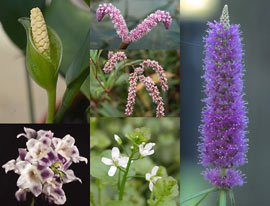 an axillaryaxillary:
an axillaryaxillary:
(adj) in, of, or produced from an axil
spathespathe:
(n) a large bract or bracts subtending and often enclosing an inflorescence
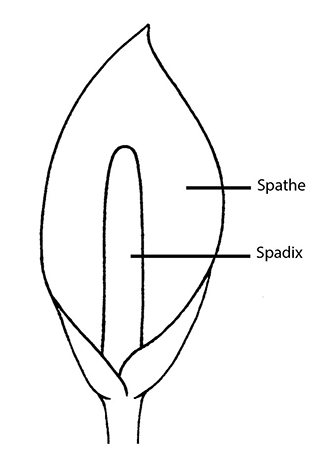 and spadixspadix:
and spadixspadix:
(n) a spike of small flowers borne on a thick, fleshy axis
 , 4-11 per axilaxil:
, 4-11 per axilaxil:
(n) the angle between a leaf or branch and the stem or trunk from which it springs
 ; peduncles erect in flower, pendent in fruit. Spathespathe:
; peduncles erect in flower, pendent in fruit. Spathespathe:
(n) a large bract or bracts subtending and often enclosing an inflorescence
 tube ovoidovoid:
tube ovoidovoid:
(adj) egg-shaped in three dimensions
to ellipsoid, glaucousglaucous:
(adj) covered with a waxy whitish or bluish coating
or not, persistentpersistent:
(adj) (of leaves etc,) remaining attached; not being dropped or falling off
, green, tinged purple, red, orange or yellow in fruit. Spadixspadix:
(n) a spike of small flowers borne on a thick, fleshy axis
 sessile, much shorter than spathespathe:
sessile, much shorter than spathespathe:
(n) a large bract or bracts subtending and often enclosing an inflorescence
 . Fruits are berries, ovoidovoid:
. Fruits are berries, ovoidovoid:
(adj) egg-shaped in three dimensions
to ellipsoid, brown, red, reddish orange, or yellow.
moist, fertilefertile:
(adj) producing viable seed, spores, or pollen; capable of reproducing
soil in shady conditions, tropical wet forest premontane wet forest; when escaped from cultivation it is found in shrublands, forest margins, disturbed sites, urban areas, abandoned land, agricultural land, wetlands, and roadsides in tropical and subtropical moist climates
Syngonium contains 35 species that are tropical wet forest epiphytes; none are true aquatics. Syngonium podophyllum tolerates short periods submergedsubmerged:
(adj) (syn. submersed) under water; submerged below the water surface
and is often sold as an aquarium plant, but will eventually die if not allowed to grow emersedemersed:
see emergent
.